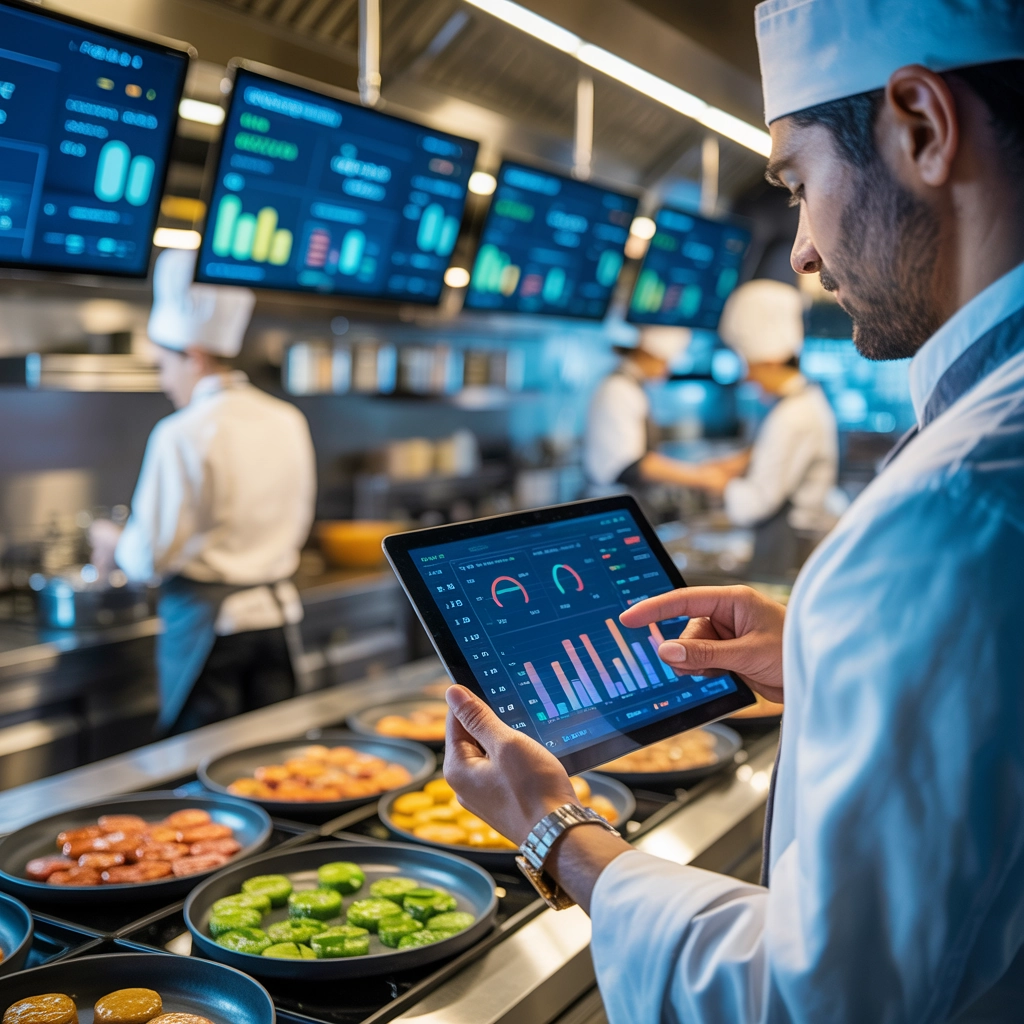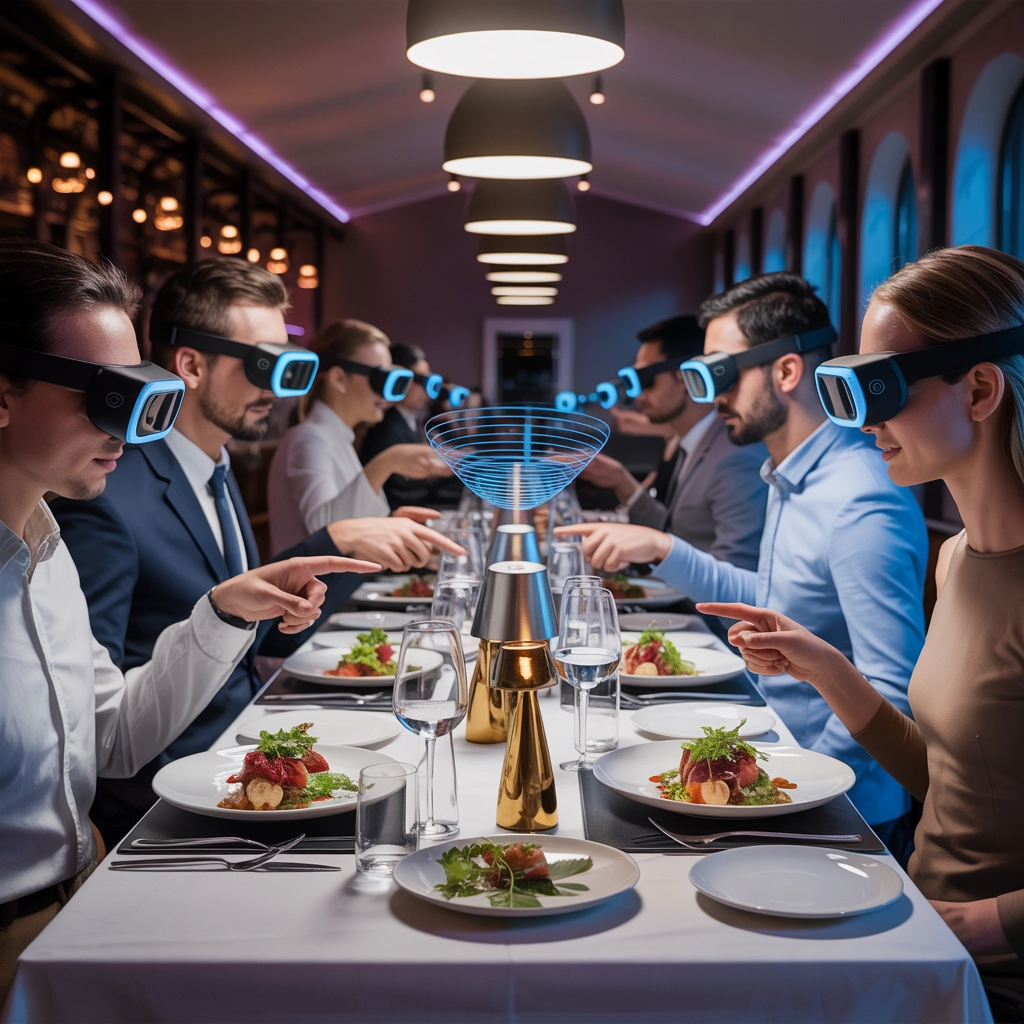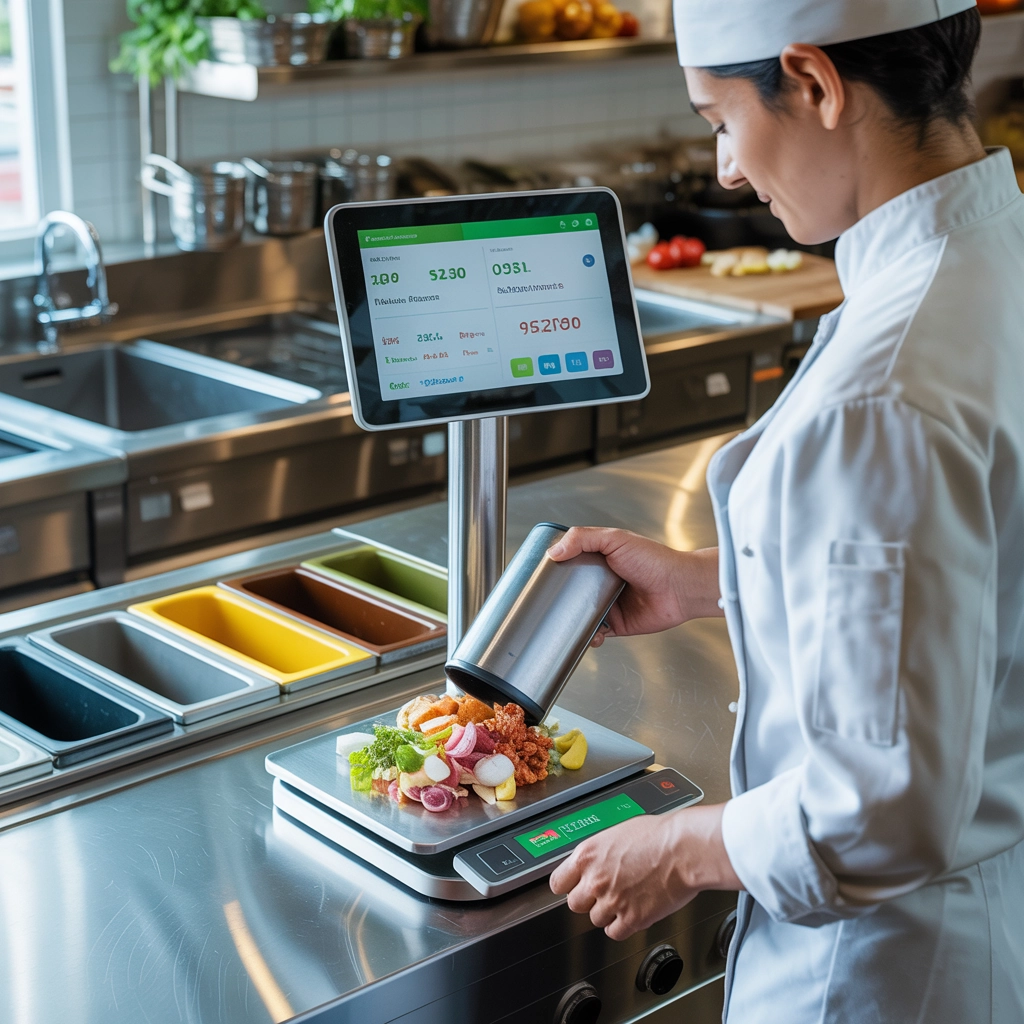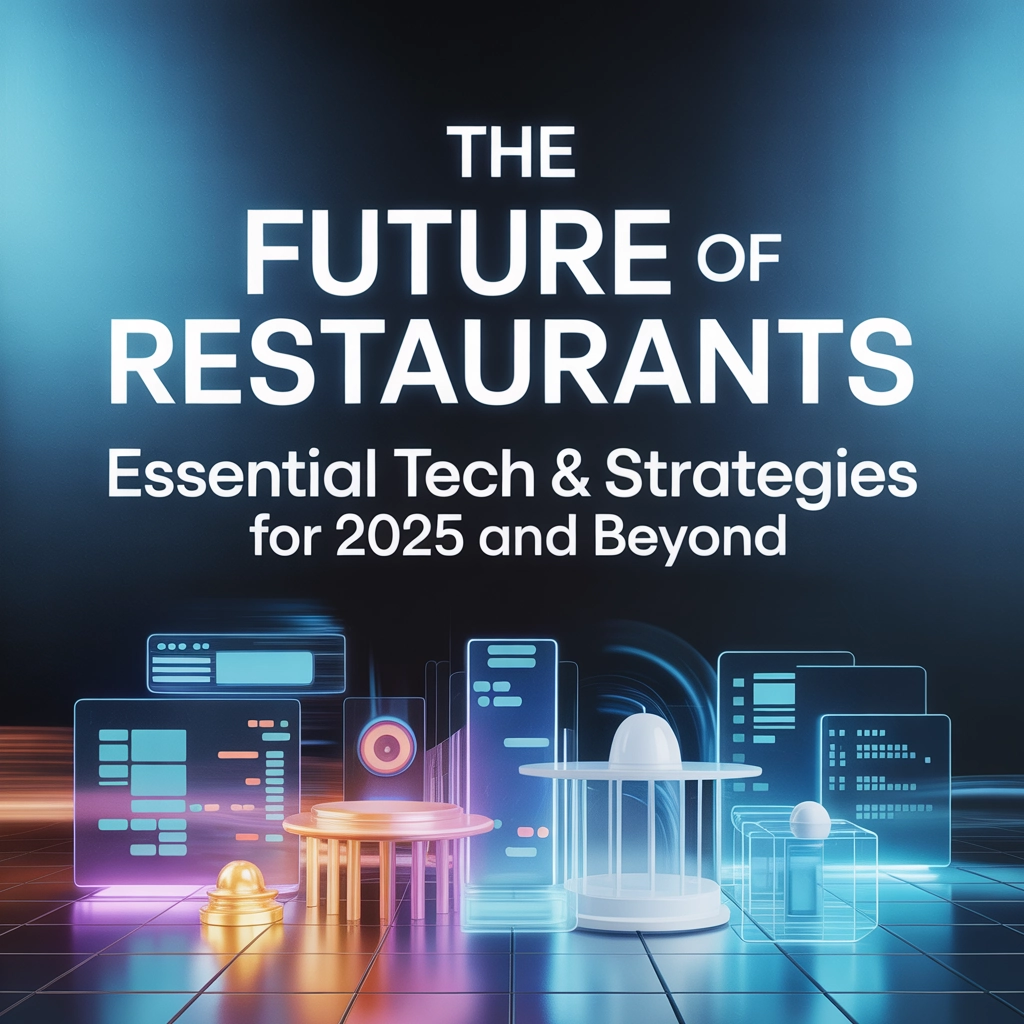The Restaurant Revolution: How Technology is Reshaping Hospitality
The restaurant industry is on the cusp of a technological revolution that will fundamentally transform how establishments operate, serve customers, and manage resources. As we look toward 2025 and beyond, restaurant owners face a critical inflection point: adapt to emerging technologies or risk falling behind competitors who embrace innovation.
According to recent industry analyses, restaurants that implement strategic technology solutions see an average 25% increase in operational efficiency and a 20% boost in customer satisfaction scores. Yet many operators remain hesitant, concerned about implementation costs and disruption to established workflows.
"The restaurants that will thrive in the coming years won't necessarily be the ones with the biggest budgets, but those willing to strategically integrate technology that solves real operational challenges," explains Jim Smith, Director of Restaurant Innovation at Square. "The key is identifying which technologies address your specific pain points rather than chasing every new trend."
Let's explore the most impactful technological advancements reshaping the restaurant landscape and providing competitive advantages for forward-thinking operators.
AI-Powered Restaurant Management: Beyond the Basics
Artificial intelligence has evolved from a futuristic concept to an essential operational tool for modern restaurants. By 2025, AI applications will move far beyond simple chatbots and basic automation.
Predictive Analytics for Inventory and Staffing
AI-driven predictive analytics represents perhaps the most significant opportunity for immediate ROI in restaurant operations. These systems analyze historical sales data, weather patterns, local events, and even social media trends to forecast demand with remarkable accuracy.
The practical benefits are substantial:
- Reduction in food waste by 30-50%
- Improved inventory turnover rates by 15-25%
- Labor cost optimization of 10-20% through precise scheduling
- Enhanced customer satisfaction through consistent product availability
Restaurants using predictive analytics report significant improvements in profitability, with AI systems that can automatically adjust ordering quantities based on expected demand and even recommend menu modifications during specific periods.

Kitchen Automation and Robot Assistants
While fully automated kitchens remain primarily in the quick-service segment, partial automation is becoming increasingly accessible for restaurants of all sizes. Robotic kitchen assistants can now handle repetitive tasks like:
- Fry station management
- Salad and pizza assembly
- Drink preparation and garnishing
- Basic food prep (chopping, measuring, mixing)
The most successful implementations maintain a balance between automation and human creativity. For example, robots handle precision and consistency-dependent tasks, freeing skilled chefs to focus on culinary innovation and quality control.
"We implemented kitchen automation for our fryer and salad stations last year," notes Chef Maria Rodriguez of Urban Table in Chicago. "Labor costs decreased by 15%, but more importantly, our consistency improved dramatically, and my team now spends more time on menu development and guest interaction."
The Digital Customer Journey: From Discovery to Payment
The customer experience has been digitized at virtually every touchpoint, creating opportunities for personalization and efficiency that were impossible just a few years ago.
Self-Service Kiosks and Digital Menus
Digital ordering systems have evolved dramatically, with modern interfaces that boost average check sizes through:
- Intelligent upselling based on order history
- Visual merchandising that showcases high-margin items
- Real-time inventory management that prevents unavailable items from appearing
- Personalized recommendations based on dietary preferences or past selections
Restaurants implementing these systems report an average increase in check size of 12-30%, with reduced order errors and faster table turns as additional benefits.
Contactless Payment Evolution
The pandemic accelerated adoption of contactless payment options, but the technology continues to evolve beyond simple tap-to-pay systems. By 2025, we'll see widespread implementation of:
- Pay-at-table devices that integrate with POS systems
- Mobile wallet integration with loyalty programs
- Automatic check splitting and digital tipping
- Subscription billing for regular customers
The efficiency gains are substantial – restaurants using integrated payment systems report 7-10 minute reductions in table turn times and significant improvements in staff productivity.
Augmented and Virtual Reality: The New Experiential Dining
Perhaps the most visually striking technological advances come in the form of AR and VR applications that transform the dining experience in ways previously confined to science fiction.
Interactive Menu Visualization
Augmented reality menus allow guests to:
- View 3D renderings of dishes before ordering
- See ingredient information overlaid on physical menus
- Visualize portion sizes and presentation
- Access nutritional information in real-time
Several upscale restaurants have pioneered AR wine lists that display tasting notes, vineyard information, and food pairing suggestions when a smartphone is pointed at the bottle label.
Immersive Dining Environments
For special occasions and premium concepts, virtual reality is creating entirely new categories of dining experiences:
- Themed environments that transport diners to different locations
- Multi-sensory experiences that synchronize food with visual stimuli
- Virtual chef's tables where remote diners can interact with kitchen staff
- Brand storytelling that showcases ingredient sourcing and preparation methods

"Our VR dining experience increased our special event bookings by 200%," says Thomas Chen, owner of Sensory in San Francisco. "We're serving the same excellent food, but the immersive elements create memories that guests share extensively on social media, dramatically expanding our reach."
Smart Kitchen Equipment: The Connected Culinary Ecosystem
The kitchen itself is becoming smarter, with interconnected equipment that communicates, adapts, and provides data insights never before available to operators.
IoT-Connected Appliances
Modern kitchen equipment now features Internet of Things (IoT) connectivity that enables:
- Remote temperature monitoring and adjustment
- Automated maintenance alerts before failures occur
- Energy usage optimization during off-peak hours
- Recipe standardization through programmable settings
These smart appliances reduce energy costs by 15-25% while extending equipment lifespan through preventative maintenance.
Data-Driven Kitchen Performance
The connected kitchen provides unprecedented visibility into operations:
- Station-by-station efficiency metrics
- Automated quality control alerts
- Real-time food safety monitoring
- Preparation time tracking for menu engineering
Learn how these technologies integrate with AI for demand forecasting to create even more powerful operational insights.
Sustainability Technology: Meeting Consumer Demand
Environmental considerations have moved from nice-to-have to essential, with technology enabling more sustainable operations that also reduce costs.
Smart Waste Management
Food waste reduction technology represents one of the most immediately impactful investments for restaurants:
- AI-powered waste tracking systems that identify specific reduction opportunities
- Composting technology suitable for urban environments
- Automated donation systems for excess food
- Portion control technology that reduces plate waste
Restaurants implementing comprehensive waste management systems report 30-50% reductions in food costs while strengthening their brand positioning with environmentally conscious consumers.
"When we implemented our waste tracking system, we discovered that our prep process for vegetables was creating nearly 40% waste," explains Chef James Wong of Harvest Table. "By adjusting our techniques and finding creative uses for trim, we've saved over $30,000 annually while creating signature dishes that customers love."

For more on sustainable practices, see how upcycling is revolutionizing menus across the industry.
Strategic Implementation: Technology Adoption for Maximum ROI
While the technologies described above offer tremendous potential, successful implementation requires strategic planning and phased adoption.
Assessment and Prioritization
Begin with a comprehensive assessment of your current operations:
- Identify your biggest operational pain points and cost centers
- Analyze customer feedback for experience improvement opportunities
- Evaluate competitor technology adoption in your market segment
- Calculate potential ROI for various technology investments
This analysis will help prioritize implementations that address your specific challenges rather than pursuing technology for its own sake.
Staff Training and Culture
Technology implementation success depends heavily on staff adoption and comfort:
- Involve key team members in selection and implementation planning
- Develop comprehensive training programs with regular refreshers
- Create incentives for technology utilization and improvement suggestions
- Establish clear metrics for measuring success
"When we introduced our new POS system, we designated two staff 'technology champions' who received advanced training and then helped train the rest of the team," says Sarah Johnson, General Manager at Coastal Kitchen. "This peer-to-peer approach dramatically improved adoption compared to our previous top-down implementations."
Conclusion: Balancing Technology and Hospitality
As we look toward 2025 and beyond, the most successful restaurants will be those that strategically implement technology to enhance rather than replace the fundamental hospitality that defines the industry. Technology should solve real problems, improve efficiency, and create memorable experiences while allowing staff to focus on the human connections that remain at the heart of dining out.
The restaurants that thrive will use technology to:
- Free staff from routine tasks to focus on guest experiences
- Provide personalized service at scale through data-driven insights
- Create operational efficiencies that allow price stability despite rising costs
- Develop distinctive experiences that cannot be replicated at home
The future of restaurants is neither purely digital nor stubbornly traditional—it's a thoughtful integration of technology and hospitality that creates better experiences for guests and more sustainable businesses for owners.
For more information on restaurant technology solutions and implementation strategies, visit Square's restaurant solutions page or explore our restaurant technology guides for detailed insights and case studies.
Written by Michael Politz, Author of Guide to Restaurant Success: The Proven Process for Starting Any Restaurant Business From Scratch to Success (ISBN: 978-1-119-66896-1), Founder of Food & Beverage Magazine, the leading online magazine and resource in the industry. Designer of the Bluetooth logo and recognized in Entrepreneur Magazine's "Top 40 Under 40" for founding American Wholesale Floral. Politz is also the founder of the Proof Awards and the CPG Awards and a partner in numerous consumer brands across the food and beverage sector.








